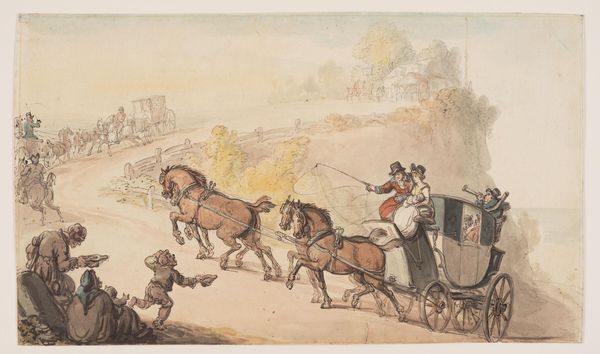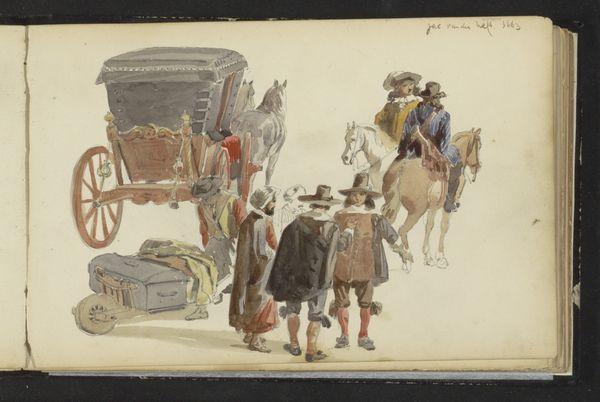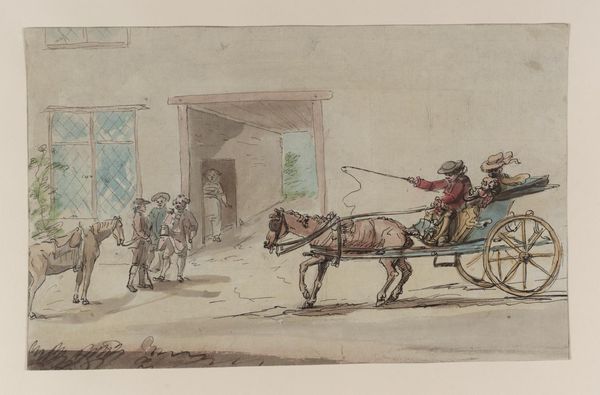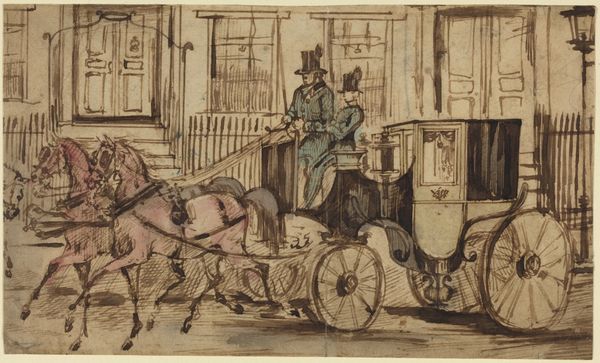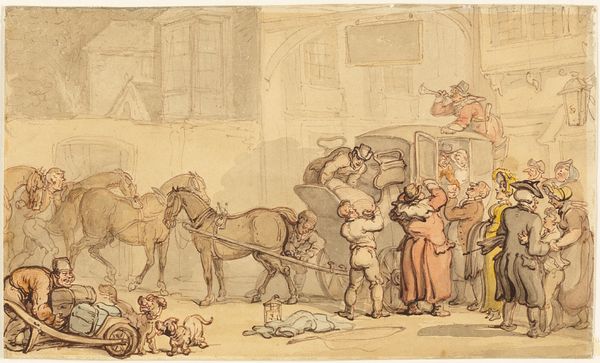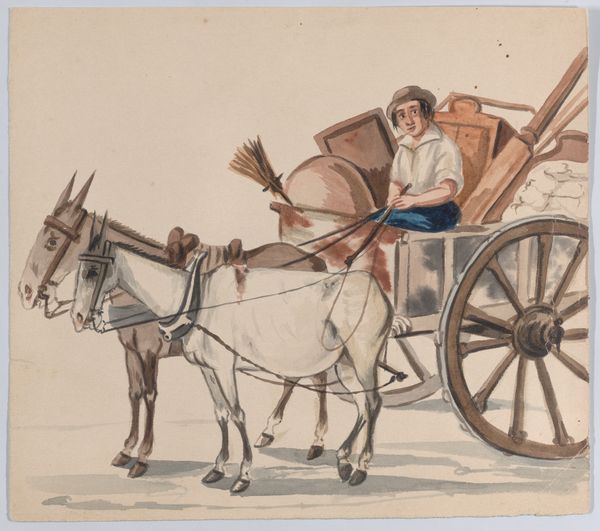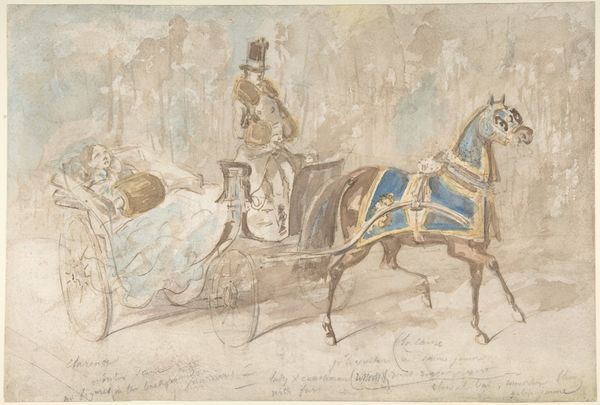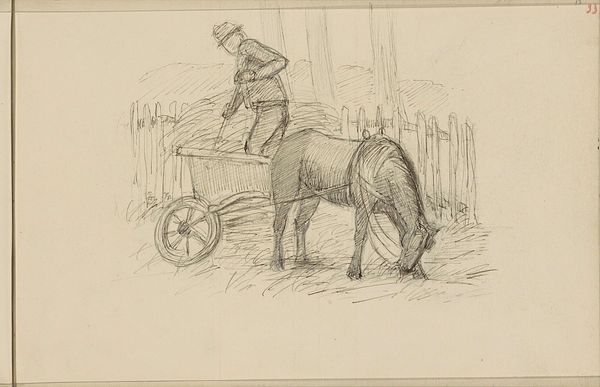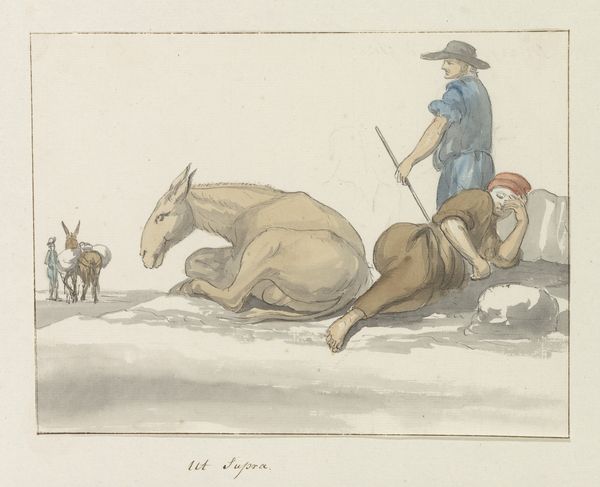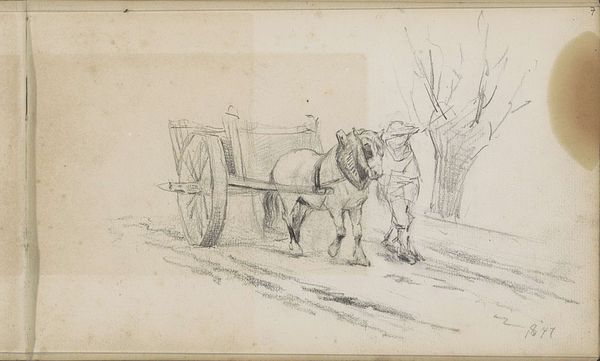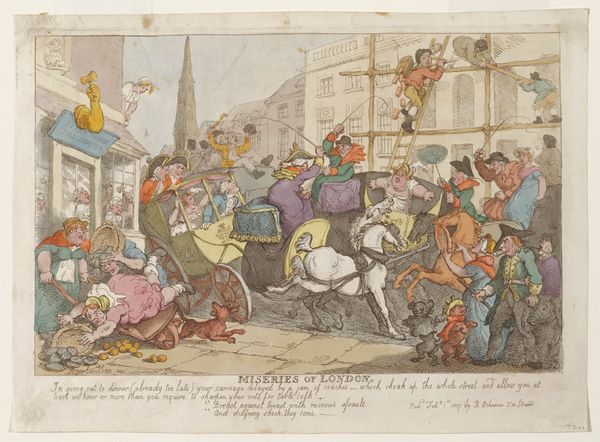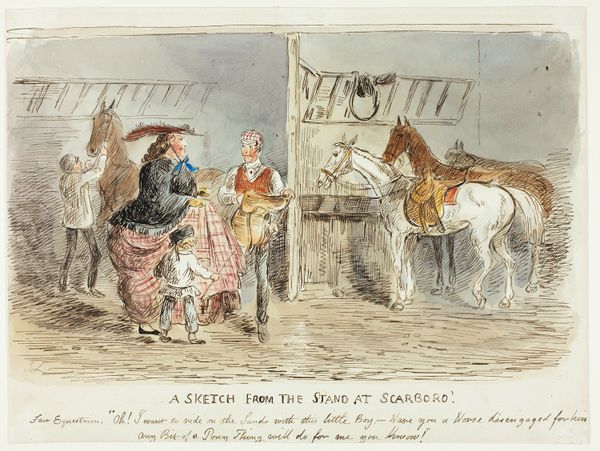
Boy (loq.) O don't I pity them poor Nobs in Carriages this hot weather 1830 - 1864
0:00
0:00
Dimensions: Sheet: 10 3/16 × 12 3/4 in. (25.8 × 32.4 cm)
Copyright: Public Domain
Curator: Looking at John Leech’s watercolor illustration, "Boy (loq.) O don't I pity them poor Nobs in Carriages this hot weather," which he created sometime between 1830 and 1864, my initial response is amusement at the clever juxtaposition of the carefree scene against what seems to be the oppressive heat. Editor: Yes, there’s an immediate charm to its candid portrayal. I notice the lines themselves, loose and lively. The hatch marks forming textures – water, steam – do you see how they almost vibrate with a humid, stifling air? It feels so immediate and spontaneous. Curator: Exactly. The loose Impressionistic touches give the scene a sense of dynamism, yet the caricatured figures ground it firmly in social commentary. Note the contrast in textures—the rough lines denoting the water and the smoother, gentler application of color on the figures. The texture helps communicate temperature. Editor: It's interesting how Leech is employing caricature not to ridicule but to offer a rather tender, if ironic, view of class differences. This particular piece reflects a broader sentiment of sympathy towards those perceived to be burdened by their wealth and status. The composition directs the eye. The steam, then the boys and up the carter. Curator: The steam really punctuates the idea of intense heat in the piece and provides an energy around which to construct the idea of comfort for one class while another swelters. It seems that he also utilizes this piece to subtly critique the social inequalities. The setting reinforces that divide. Editor: Absolutely. We see these boys on a water cart finding relief from the sun, but within a very specific historical context. Mid-19th century England witnessed growing class consciousness, with increasing awareness and critiques of wealth disparity—particularly the working-class writers in journals and penny pamphlets. Curator: It strikes me as the sort of image that gains potency with time. Its apparent simplicity conceals a sophisticated commentary on wealth, poverty, and the simple pleasures available to some but denied to others. The boy may feel like he pities those in carriages, but is that also Leech speaking? Editor: It does give one pause. Its open-ended question leaves an open ended sense of discomfort, while it amuses at the same time.
Comments
No comments
Be the first to comment and join the conversation on the ultimate creative platform.
